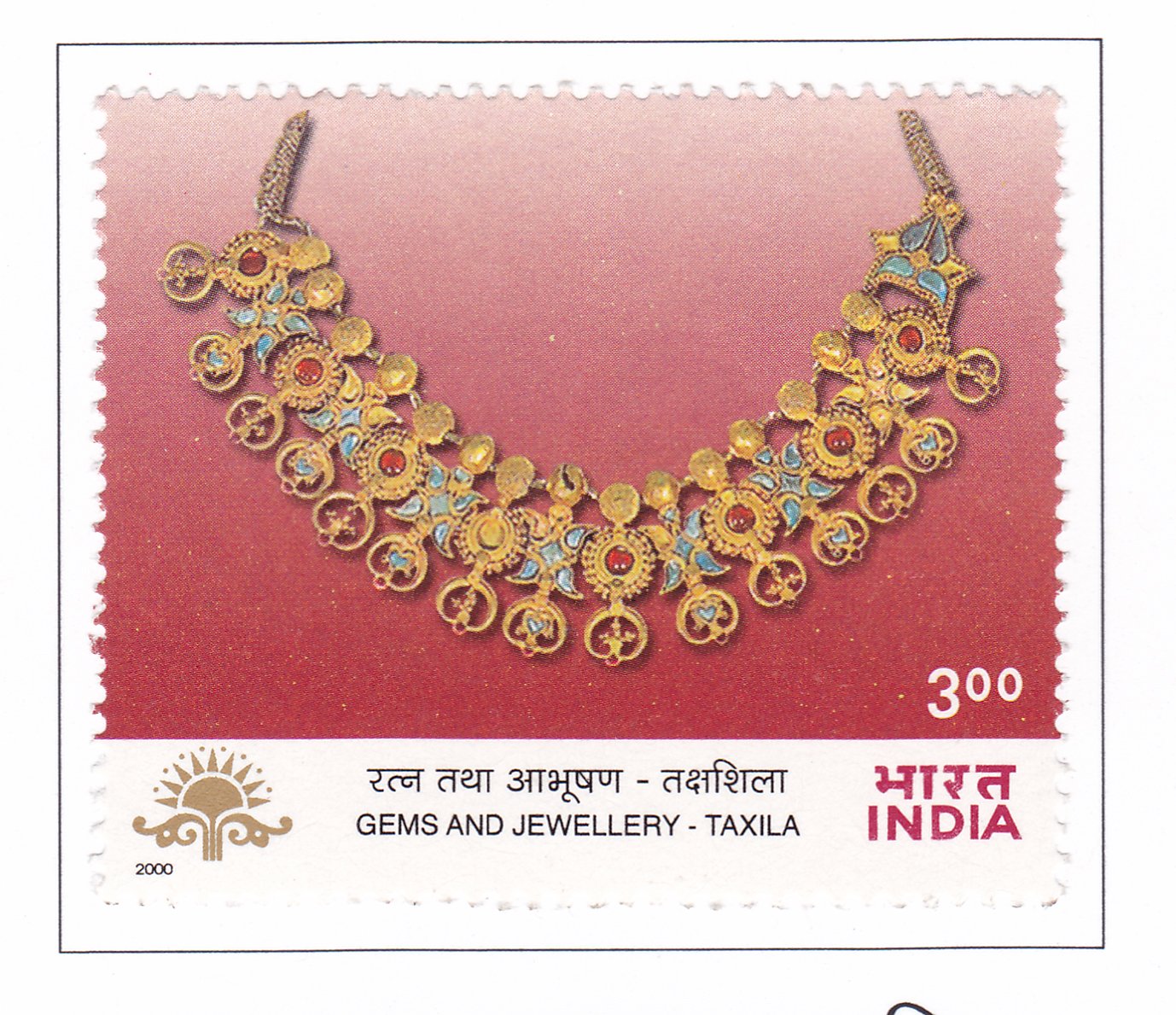Gold Necklace from Taxila

Technical Data
| Stamp Set | Indipex Asiana 2000 International Stamp Exhibition, Calcutta |
|---|---|
| Date of Issue | December 7, 2000 |
| Denomination | Rs. 3 |
| Quantity | 3,000,000 |
| Perforation | comb 13½ |
| Printer | Calcutta Security Printers Ltd |
| Watermark | No Watermark |
| Colors | Multicolor |
| Catalog Codes |
Michel IN 1801 Stamp Number IN 1860 Yvert et Tellier IN 1566 Stanley Gibbons IN 1967 |
| Themes | Jewelery | Philatelic Exhibitions |
Table of Contents
Gold Necklace from Taxila (1st Century AD)
Design Elements:
Stamp Design:
- Description: Features an ancient gold necklace from Taxila, dated to the 1st century AD, showcasing the intricate craftsmanship of early Indian goldsmithing.
- Visuals: The stamp highlights the necklace’s elaborate design, emphasizing its use of gold and the detailed ornamentation that reflects the artistry of the period.
Key Features:
- Design: The necklace displays a sophisticated arrangement of gold beads and links, demonstrating advanced techniques in goldsmithing from ancient India.
- Materials: Made from gold, with intricate patterns and detailing that exemplify the craftsmanship of the era.
- Craftsmanship: Features detailed workmanship including granulation, repoussé, and possibly filigree techniques.
Cultural and Historical Significance:
- Historical Context: Taxila, an ancient city in present-day Pakistan, was a major center of trade and culture during the 1st century AD. It was known for its advanced techniques in metalwork and ornamentation.
- Cultural Relevance: The gold necklace from Taxila represents the high level of sophistication in ancient Indian jewellery, reflecting the artistic and technological advancements of the time.
Usage:
- Educational Tool: Provides insight into the advanced techniques of goldsmithing practiced in ancient India, illustrating the historical significance of Taxila as a cultural and trade hub.
- Commemorative: Celebrates the rich heritage of Indian jewellery and craftsmanship, highlighting the artistic achievements of the 1st century AD.
Importance of the Commemorative Stamp Set:
- Historical Preservation: Preserves and celebrates the ancient art of goldsmithing, showcasing the historical and cultural significance of jewellery from Taxila.
- Artistic Recognition: Honors the intricate design and craftsmanship of the necklace, reflecting the advanced techniques and artistry of ancient Indian goldsmiths.
Example of the Stamp Design:
- Main Image: Detailed depiction of the gold necklace, highlighting its intricate design and the craftsmanship involved.
- Background: May feature elements that reflect the historical and cultural context of Taxila, such as motifs from ancient art or architectural details from the city.
- Text: Includes a brief description of the necklace, its historical significance, and the techniques used in its creation.
The Commemorative Stamp Set Might Include:
- Main Stamp: Features the gold necklace from Taxila, emphasizing its historical and artistic value.
- First Day Cover: Could include imagery related to the city of Taxila, such as its ancient ruins or other significant artifacts, providing context to the necklace’s origin.
Significance:
The stamp of the gold necklace from Taxila commemorates the exceptional craftsmanship of ancient Indian goldsmiths and highlights the historical importance of Taxila as a center of trade and culture. It serves as a tribute to the artistry and technological advancements in jewellery from the 1st century AD, reflecting the rich heritage of Indian craftsmanship.
